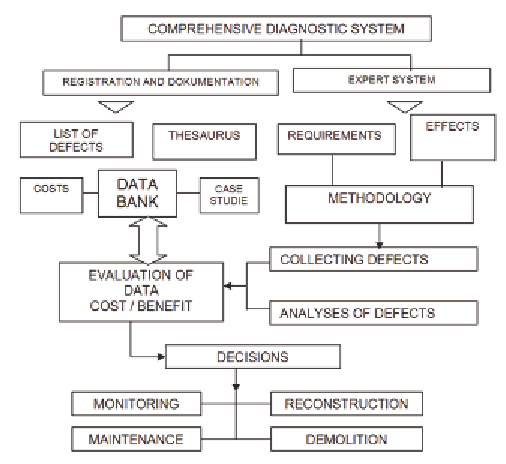Information Technology Reference
In-Depth Information
IntroductIon
dIAgnoStIc SyStEm
It is important, that people in architecture sci-
ence give a useful guide-especially concerning
questions raised by new trends of the changing,
transforming building activities and construction
development-to the profession practice. Seeing
that in the aspect of adequacy the appearance of
new constructions and building materials always
raises new problems to be solved, and the experts in
practice busy with the daily tasks of the profession
'according to Möller (1945) cannot always pay
enough attention to them'. The efficient diagnostic
activity as it has been explained before plays a very
important part in the formation of maintenance
costs and elimination of damage. It has a just as
important part in the preparation of a decision, as
having a clear picture of the technological condi-
tions of buildings or group of buildings can be of
service at the preparation before making financial
decisions of great significance.
A faulty diagnosis can lead to incorrect decisions
causing financial loss. The research group of the
Széchenyi István University (Győr) worked out
such a comprehensive diagnostic system (see
Figure 1) which contains a common inspection
method 'according to Molnárka (2000) for the
vast majority of constructional components (for
traditional and actually used constructions in
Hungary), and can be used for computer data
registration and analysis.
The morphological box (Zwicky 1966) is con-
nected with the construction components' thesau-
rus denoted by the correct structure codes of these
constructions' place in the hierarchy. The theory
of using morphological box for data registration
in the process of building diagnostic (Koppány
1977) was published in Hungary seven years ago.
The “matrix” construction of our morphological
box fits to the methodology of the visual examina-
tion and to the hierarchy of the common building
Figure 1.

Search WWH ::

Custom Search